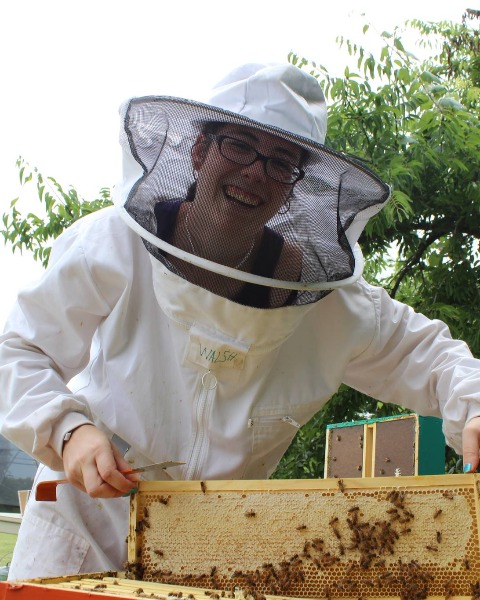PBT
Section Symposium
Impacts of Pesticide Toxicity in Agroecosystems – Implications on Physiology, Behavior and Population Dynamics of Pests and Pollinators
2: Effects of beekeeper-applied pesticides on the reproductive health of honey bee (Apis mellifera) queen physiology and worker retinue behavior
On-Demand

Juliana Rangel
Texas A&M University
College Station, Texas
Elizabeth M. Walsh
USDA-ARS
Baton Rouge, Louisiana- NI
Nancy Ing
Texas A&M University
College Station, Texas
Presenting Author(s)
Co-Author(s)
Most honey bee (Apis mellifera) colonies in the United States have been exposed to the beekeeper-applied miticides amitraz, coumaphos, and tau-fluvalinate. Colonies are also often exposed to agro-chemicals, which bees encounter on foraging trips. These and other lipophilic pesticides bind to the beeswax matrix of comb, exposing developing bees. We explored whether queen-rearing beeswax containing pesticides affects the reproductive physiology and behavior of mated queens. We predicted that queens reared in pesticide-free beeswax would have lower measures in traits of reproductive health compared to queens reared in in wax containing pesticides. To test these hypotheses, we reared queens in beeswax-coated cups that were pesticide-free or contained field-relevant concentrations of 1) amitraz, 2) a combination of tau-fluvalinate and coumaphos, or 3) a combination of the agrochemicals chlorothalonil and chlorpyrifos. We used virgin queens to measure nurse feeding rate at the queen larval stage. We then collected virgin queens once they mated to determine traits such as morphology, ovariole number, mandibular gland chemical composition, retinue size, sperm viability, mating frequency and brain transcriptomes. Our results suggest that miticide exposure during development affects queen reproductive physiology and worker behavior towards mated queens. These findings, which have practical implications for commercial queen rearing operations and overall colony health, call for further study.

